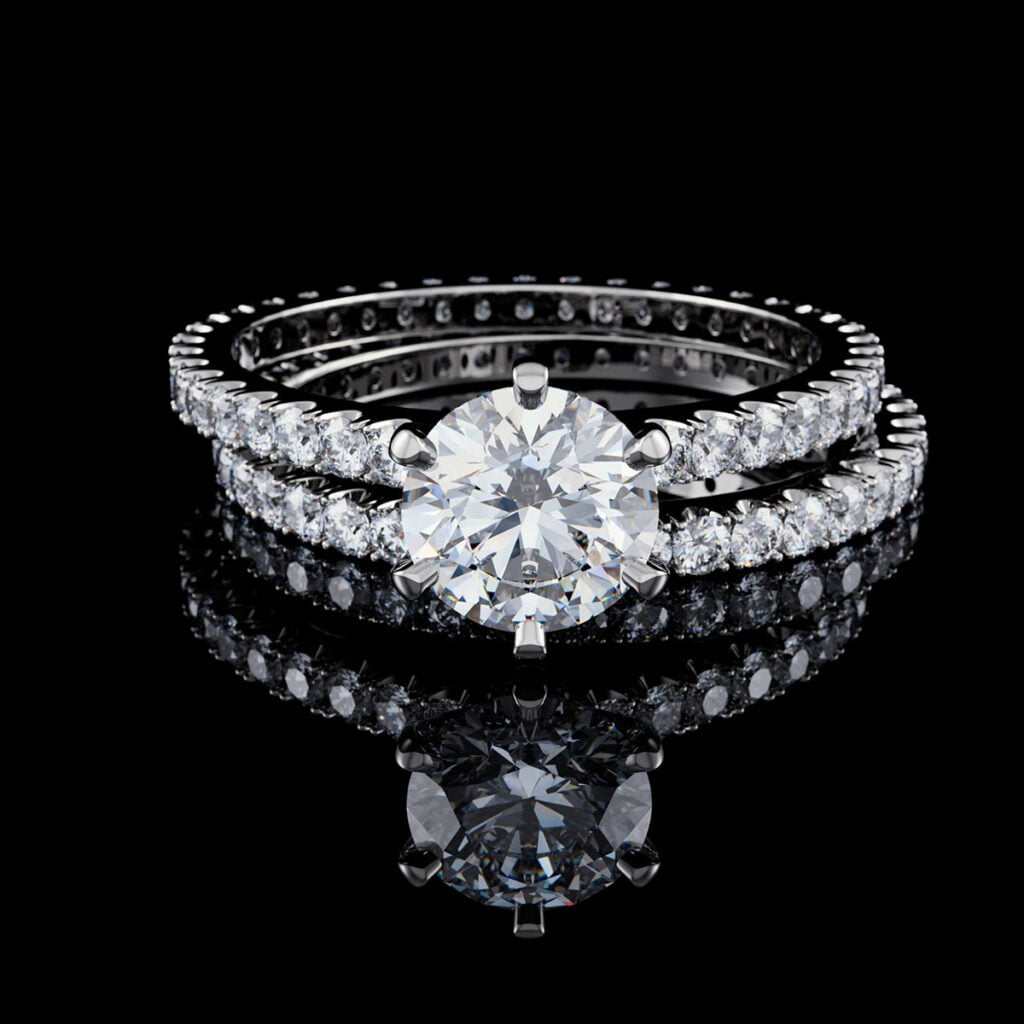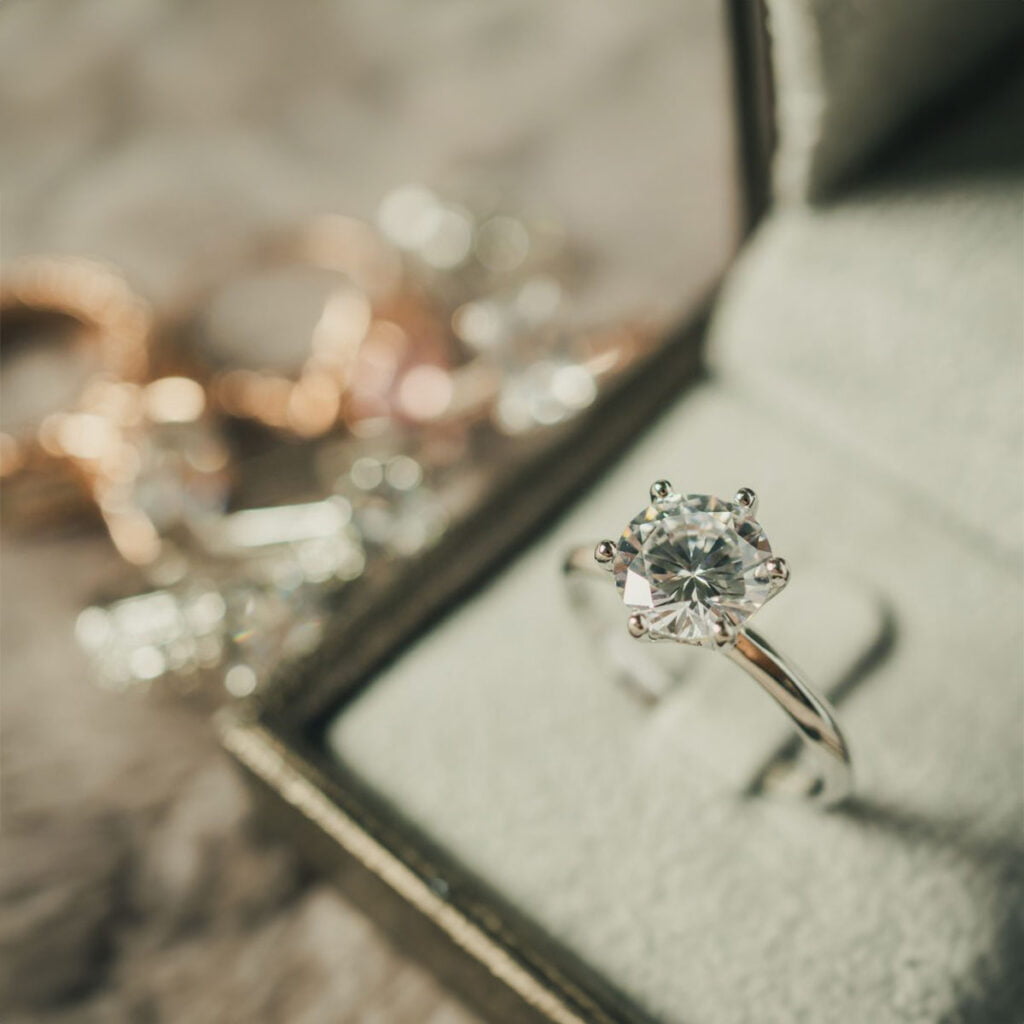Understanding the world of diamonds can be quite intricate, but the introduction of the 4Cs—colour, clarity, cut, and carat weight—simplified this complexity significantly. This concept was pioneered by Robert M. Shipley, the founder of the Gemological Institute of America (GIA), in the 1940s. Before this revolutionary standard, there was no uniform method to evaluate a diamond’s quality. Traders and jewellers used inconsistent terms to describe diamonds, leading to confusion and uncertainty.
The 4Cs standardised the process, allowing for a universal language in the diamond industry. President Richard T. Liddicoat, Shipley’s successor, further developed these standards by creating the GIA D-to-Z Colour Scale and the GIA Clarity Scale. These innovations meant that customers could confidently understand what they were purchasing, ensuring transparency and trust in the market.
Colour is a crucial factor in determining a diamond’s value and beauty. The GIA D-to-Z Colour Scale is the industry benchmark for assessing a diamond’s hue. D represents a completely colourless diamond, while Z indicates a light yellow or brown tint. The less colour a diamond has, the higher its value.
Interestingly, diamonds come in other natural colours, such as blue, pink, and green, known as “fancy colours.” These rare diamonds can be exceptionally valuable and add a unique touch to engagement rings and other jewellery pieces.
One way to think about diamond colour is to compare it to a drop of water. The purer and clearer the water, the higher its perceived quality. Similarly, a diamond with less colour is more desirable. When selecting a diamond, it’s essential to balance colour with the other 4Cs to ensure overall beauty and value.
Clarity measures how free a diamond is from internal inclusions and external blemishes. The GIA Clarity Scale ranges from Flawless (FL) to Included (I1, I2, I3). Inclusions are internal imperfections, such as tiny crystals, clouds, or feathers, while blemishes are surface irregularities.
Clarity is vital because these imperfections can affect a diamond’s brilliance. A diamond with fewer inclusions and blemishes will allow light to pass through more freely, enhancing its sparkle.
A good analogy for clarity is looking through a window. A clean, clear window offers an unobstructed view, while a dirty window distorts what you see. Similarly, a diamond with high clarity is more visually appealing and valuable.
The cut of a diamond is the most critical aspect of its beauty. It refers to how well a diamond’s facets interact with light. The GIA Cut Scale ranges from Excellent to Poor. A well-cut diamond will reflect light internally from one mirror-like facet to another and disperse it through the top of the diamond, resulting in maximum brilliance and fire.
Even if a diamond has excellent colour and clarity, a poor cut can result in a dull appearance. This is because the cut affects how light travels through the diamond and how it reflects back to your eyes.
Diamonds can be compared to a set of mirrors. If the mirrors are perfectly aligned and polished, they reflect light brilliantly. However, if they are misaligned or scratched, the reflection is distorted. Similarly, a well-cut diamond will showcase its best qualities, making it appear more vibrant and lively.
Carat weight measures a diamond’s size and is often the most noticeable of the 4Cs. However, bigger isn’t always better. It’s crucial to balance carat weight with cut, colour, and clarity to ensure the diamond’s overall beauty and value.
One carat is equivalent to 200 milligrams. Diamonds with the same carat weight can look different in size due to differences in cut proportions. Therefore, a well-cut diamond can appear larger and more brilliant than a poorly-cut diamond of the same weight.
When considering carat weight, think of it like choosing a car. You wouldn’t select a vehicle solely based on size; you’d also consider its performance, features, and appearance. Similarly, selecting a diamond involves considering all four Cs to find the perfect balance.


Each of the 4Cs contributes to a diamond’s overall beauty and value. However, they don’t work in isolation. A diamond’s true quality is determined by how these characteristics interact. For instance, a diamond with a high-carat weight but poor cut, colour, and clarity will not be as valuable or beautiful as a smaller diamond with excellent ratings in these areas.
Fun Fact: Did you know that the famous Hope Diamond, which weighs 45.52 carats, is not only large but also exhibits a rare deep blue colour? This unique combination of size, colour, clarity, and cut makes it one of the most famous diamonds in the world.
When purchasing a diamond, especially for significant pieces like engagement rings, it’s essential to consider all four Cs. Start by determining what’s most important to you. For some, size (carat weight) might be the priority, while others might focus on brilliance (cut) or clarity.
Visit Hatton Garden Stores or reputable Hatton Garden Jewellers to explore a variety of options and get professional advice. By understanding the 4Cs, you can make an informed decision that balances beauty, quality, and value.
When making your choice, think of the 4Cs as ingredients in a recipe. Each one adds to the final dish’s flavour and appearance. By balancing these elements, you can create a stunning piece of jewellery that will be cherished for years to come.
Lab-grown diamonds also follow the 4Cs standard. These diamonds are an excellent choice for those looking for ethical and sustainable options without compromising on beauty and quality.
By mastering the 4Cs, you can confidently navigate the diamond market and choose a gem that truly sparkles. Whether you’re shopping for a special occasion or investing in a timeless piece, understanding these principles will ensure you make a choice that brings joy and satisfaction.
Understanding the 4Cs of diamonds—colour, clarity, cut, and carat weight—is essential for making informed and confident purchases. By mastering these elements, you can select a diamond that perfectly balances beauty, quality, and value. Whether you’re shopping for engagement rings, exploring options at Hatton Garden Stores, or considering lab-grown diamonds, the knowledge of the 4Cs empowers you to choose a gem that truly sparkles and meets your expectations.
What are the 4Cs of diamonds? The 4Cs are colour, clarity, cut, and carat weight.
Why is a diamond cut important? Cut affects a diamond’s sparkle and overall beauty.
What does carat weight measure? Carat weight measures the size of a diamond.
How does clarity impact a diamond’s value? Clarity influences the diamond’s visual appeal and worth.
Are lab-grown diamonds evaluated using the 4Cs? Yes, lab-grown diamonds follow the 4Cs standard.

We invite you to visit our showroom in the heart of London’s jewellery district. Our team of experts is here to help you find or design the perfect engagement ring, whether you’re looking for a timeless diamond solitaire or something completely unique.
Find Us at 15 Greville Street, Hatton Garden, London EC1N 8SQ.